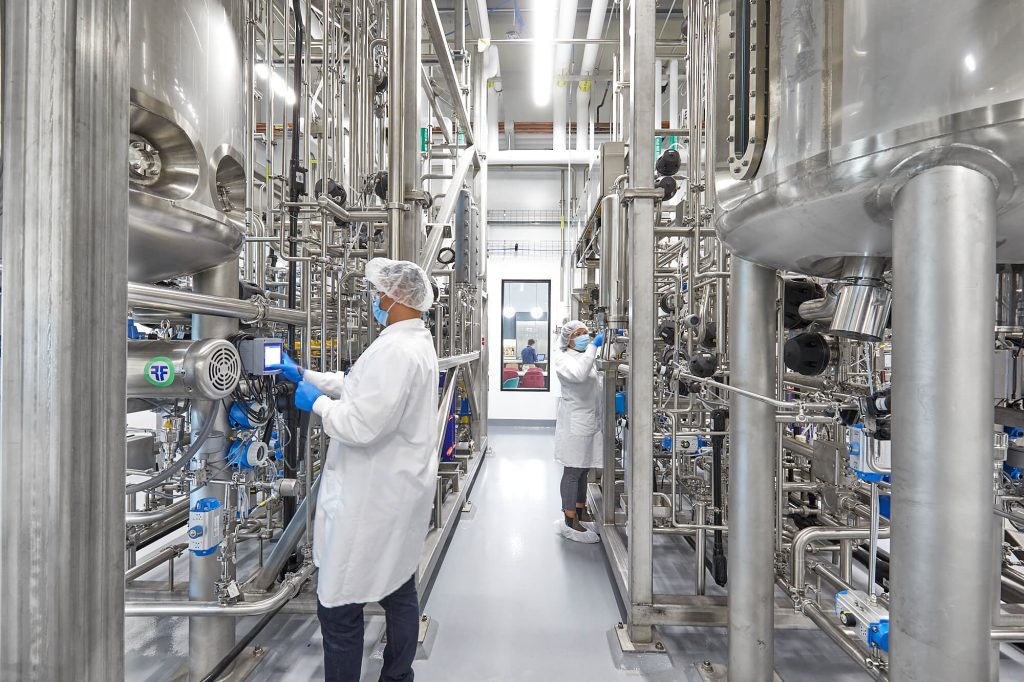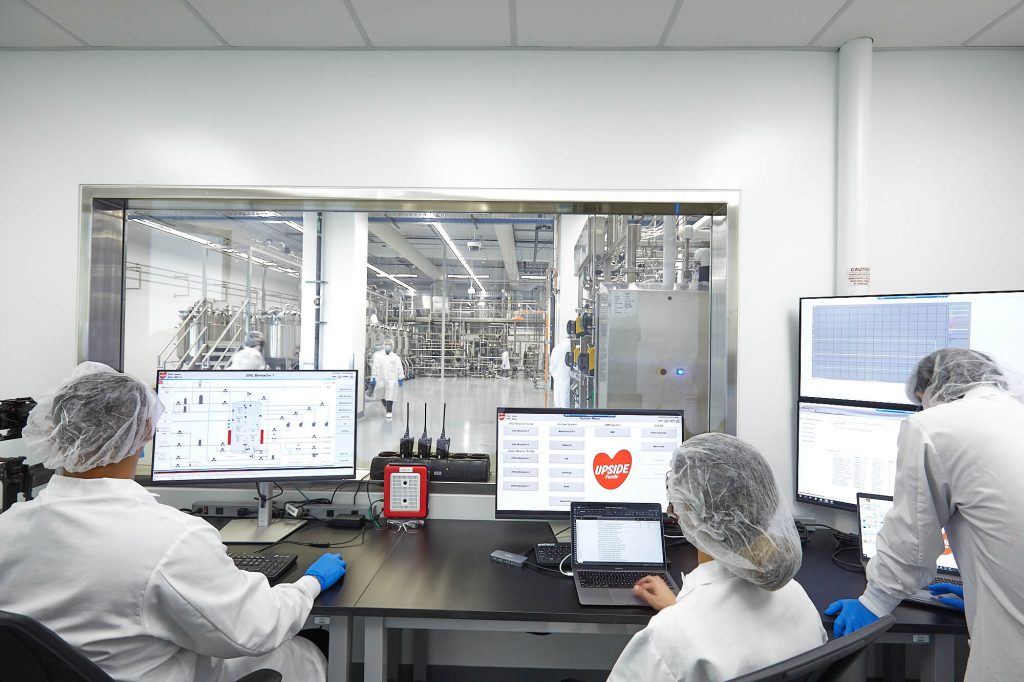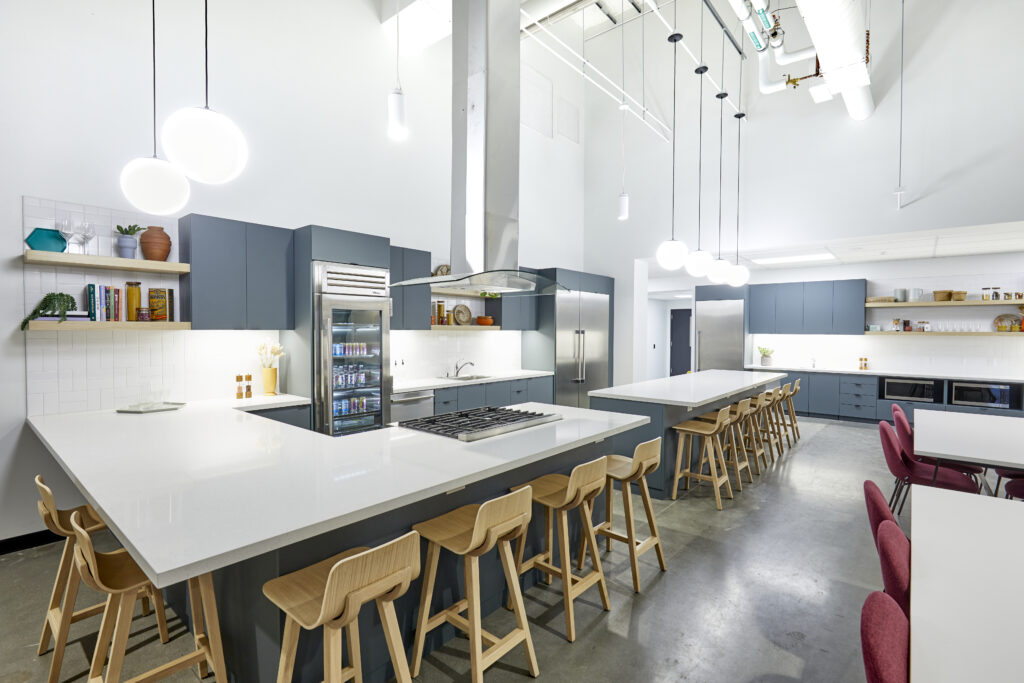Meat Reimagined: No Farm, No Fowl
July 29, 2024

Written by
UPSIDE Foods
In 1906, Upton Sinclair’s The Jungle did more than just shock America with its raw depiction of the meat industry; it became a catalyst for monumental change. His vivid portrayal of the dire conditions and lack of transparency in early 20th-century meat production led to groundbreaking reforms.
Today at UPSIDE, our production process looks nothing like that described in The Jungle. In stark contrast to traditional meat production, where the use of cameras often faces legal restrictions to shield their practices from public view, we provide a literal window into our production process.
Read on to witness firsthand how our sausage (or shredded chicken, or meatball…) is crafted in an environment that’s light-years away from the operations of conventional slaughterhouses and meatpacking plants.
Welcome to EPIC: The Heart of Innovation at UPSIDE Foods

Here at UPSIDE, we’re not just making meat; we’re reinventing the entire process. Our Engineering, Production & Innovation Center (EPIC), situated in the vibrant Emeryville, California neighborhood, isn’t hidden away. It’s a part of the community, adjacent to art galleries and eateries, and complete with large glass windows.
In its current configuration, EPIC is designed to produce around 50,000 pounds of meat annually, with plans for expansion to a larger capacity. But it’s not just about quantity; it’s about transforming the perception of meat production. Let’s take a look inside.
From Cells to Sandwiches: Inside the Cultivation Room

Step through the front doors, and you’ll immediately see windows that look directly into the heart of innovation – our Cultivation Room, where the journey from cells to meat begins. Here, we have a variety of vessels called cultivators (ranging from 2L to 2,000L) that are key to growing meat. These cultivators create the perfect conditions for cells to grow and thrive, using controlled temperature, oxygen, and specific nutrients.
The cultivators’ interiors and the interiors of the connecting pipes are maintained in a sterile state – unimaginable in a conventional meat processing facility – to ensure the highest standards of cleanliness and quality.
To start the process of cultivation, cell feed is transferred into cultivators along with a small sample of cells. Cell feed provides the essential components cells need to grow, such as sugars, amino acids, vitamins, minerals, and salts, mimicking the nutrition cells would naturally receive within an animal’s body. In our larger-scale production process, the cells are then moved through a series of vessels of increasing size or quantity to continue their growth. This gradual progression is essential because as the cells multiply, they need more space and resources to continue growing healthily. After harvest, the cells are removed from the cultivators (we call this step “harvest”), separated from the cell feed, and combined with other ingredients like plant-based proteins, herbs, and spices to become the final delicious dishes ready to enjoy!
To learn more about how we grow our cells, check out our Innovation page here.
The Brain of the Operation: The Role of the Control Center

Attached to the Cultivation Room you will find our Control Center, which plays a crucial role acting as the facility’s operational brain. The Control Center is monitored 24 hours a day. It observes every step of the cultivation process to ensure optimal conditions for cell growth.
Our sophisticated monitoring system catches any unfavorable conditions in the cultivation tanks swiftly. We have a deep understanding of the rates at which healthy cells consume nutrients and produce carbon dioxide and waste. Any deviation from these expected rates is quickly flagged by the system, allowing us to address potential issues promptly, and is one of the many ways that we ensure sub-optimal products never leaves our doors. This ensures that we maintain our high standards of quality and safety.
(Food) Safety First! Our Quality Assurance Lab
Like any commercial food production facility in America, we have a Food Safety & Quality Assurance Lab. This is where we test our meat, equipment, and environment to ensure world-class safety and quality.
In addition to making the product, it is of the utmost importance to us to verify that it’s safe! The main role for our Quality Assurance Lab is testing everything that comes out of our cultivators. Most food producers randomly test batches, but at UPSIDE we test every. single. batch. It’s more expensive to do it this way, but to us this is more than worthwhile to proudly stand behind the safety and quality of every bite that leaves our doors.
The QA lab is also responsible for monitoring the environment the food is being made in, so ensuring that walls, floors, surfaces and all of the gear that we’re wearing inside is clean and suitable for food production.
The Formulation Area: Where UPSIDE Chicken Takes Shape

Connected to the Cultivation Room, you will find our Formulation Area. Here, the harvested meat undergoes preparation and packaging into many recipes you use chicken in today, from dumplings to sausage to pizza toppings. This stage is critical for refining the product through rigorous testing, including blind taste tests, to ensure the meat meets our standards.
Flavor Focus: Taste with a Sensory Panel
Using a panel of experts trained to sense over 120 different attributes in food, we evaluate a variety of conventional chicken products as well as our cultivated chicken.Throughout the tasting, the panel ranks each sample on numerous flavor, aroma, taste, and aftertaste attributes, such as “savory,” “white meat,” and “salty.” From these observations, each sample’s unique flavor fingerprint emerges, enabling us to continue making improvements to our process and recipes. The goal is that someday our products deliver on everything you’d expect from conventional chicken… and then some!
A Taste of Community: Inside the Open Kitchen

As our tour circles back to the front doors of EPIC, we reach The Kitchen. More than a culinary space, it stands prominently at the entrance, inviting visitors to experience our cultivated meat products right where they’re made. Every operation within this space, from waste segregation to comprehensive sustainability training for all team members, reflects our commitment to making meat right. As a functional space where employees gather daily for meals, it reinforces our focus on creating a sense of unity and shared purpose, underpinned by a deep respect for the planet, animals, and people.
As we conclude our journey through our EPIC facility, it’s clear that the spirit of Upton Sinclair’s call for reform in the meat industry lives today in ways he could never have imagined. Together, we’re not just witnessing a transformation in how meat is produced; we’re participating in a pivotal shift towards a more ethical, sustainable, and transparent food system.


